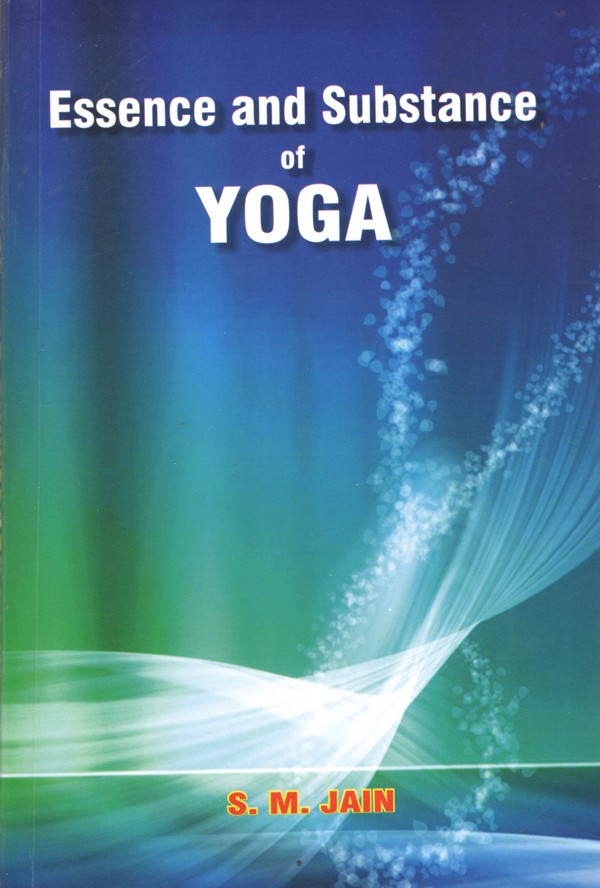Jain Stream Of Yoga
Since the very beginning of Indian civilisation Vedic and Jain cultures have been concurrent, interacting, reinforcing and enriching each other. As in Vedic literature the term ‘Yoga’ with its varied implications, usage and practices in one form or other is found in Jain ancient canonical scriptures classified and grouped as twelve ‘Angas’ of which the twelfth ‘Anga’ comprises fourteen ‘Purvas’. Oldest scriptures ‘Acharang’, ‘Sutrakritang’, ‘Samvayang’ etc. all contain references regarding yoga. However, the contents of yoga in various contents were scattered. Like Patañjali initially and subsequently various scholars in Vedic stream, in Jain stream also scholars notably Acharya Haribhadra Suri, Acharya Hemchandra. Shubhchandrcharya, Upadhyaya Yashovijaya and others systematically compiled and wrote treatises exclusively on Yoga. Haribhadra Suri’s four works ‘Yoga Shatak’, ‘Yogavinshika’, ‘Yogabindu’ and ‘Yogadrishti’ are very elaborate and accommodating in assimilating other view points particularly the Vedic. Hemchandracharya’s ‘Yogashastra’ is very comprehensive. Shubhachamhacharya’s ‘Jnanarnava’ deals with almost every aspect of yoga. Upadhaya Yashovijaya wrote three texts ‘Adhyatmasara’, ‘Adhyatmopnished’ and ‘Dvibhanshit Dvavinshika’. Subsequently several saints explained yoga in their respective works. Presently Acharya Tulsi, Acharya Mahapragya, Acharya Shivmuni, Chandraprabhasagar Lalitprabhasagar have written extensively and contributed immensely in popularising and spreading Yoga concepts and practices. There is almost unique synergy and no substantial difference except in some nomenclature and modification in Jain and Vedic streams.
In Jainism ‘Yoga’ has two connotations. One is ‘Samadhi’ (the ultimate or salvation) and other ‘Samyoga’ (Union i.e. which connects or are means). The term ‘Yoga’ has been mentioned in both these aspects i.e.
Yuvaktiḥ yojanaṁ, yujyate iti va yogeḥ
In ancient Jain scriptures the word ‘Yoga’ has been used generally for activities of mind, speech and body and disciplining, regulating them.
One should abide by eight-fold discipline categorised as five ‘Samitis’ and three ‘Guptis’. Samitis are five ‘Irya’, ‘Bhasa’, ‘Yashna’, ‘Adan-nikshop’ and ‘Uchhar’. ‘Irya’ is discipline and caution in walking, sitting and all activities of body, ‘Bhasa’ is same in speech, ‘Yashna’ is in food, drinks, clothes etc., ‘Adan-nikshep’ is in picking and placing things properly and ‘Uchhar’ or ‘Utsarg’ is putting or disposing excreta, urine and other waste at places, in such a way that no harm is done to any. Three ‘Guptis’ imply restrain in all activities of mind, speech and body.
This will ensure proper time management, efficiency and undisturbed biological clock.
Purva śodhanaṁ tato norodhaḥ The activities of all the three modes of yoga should first be cleansed of all wrong indulgences and then withdrawn from everything bad and harmful. The word ‘Nirodhaḥ’ should not imply cessation or stoppage which would mean death. Even Arhats in their purest and most enlightened state do no stop mental, speech and body activities, of course they are channelized into pious thoughts, words and actions.
Nirodha implies full concentration in any activity being undertaken whether of mind, speech or body without wavering into other activities.
The entire philosophy, concept and practice of yoga, its principles, instruments, modes, means, steps and contrivances have all been condensed and put in one stanza.
Rational belief, attitude, rational knowledge/understanding and rational conduct, the three combined and simultaneously imbibed and followed will put the aspirants on right path, making his life/journey happy, peaceful, harmonious and eventually lead to attain the state of highest purity and enlightenment, call it salvation or whatever name of almost tranquillity and equanimity, free from all sorrows, pains, worries, prejudices, attachments and full of, compassion, love and benediction for one and all. These three are adored as three precious jewels.
The whole edifice of Jain philosophy, metaphysics, interactions, interrelations and code of conduct is built on the solid foundation of rationality in the three aspects, the three jewels for peace, progress and attainment of the ultimate, the highest, the most pious state. The elaborate sets of principles and sub-principles, various rules and sub rules, steps and sub steps, vows and their transgressions, causes and effects, methods and methodologies, processes and sub processes, cautions and precautions, chronology and history are all expansions of these three fundamentals.
In Jain Yoga mode or process of journey or progress there are fourteen stages called ‘Gunsthanas’ (qualitative progressive stages) from rudimentary minimal stage of utmost darkness or ignorance to the stage of highest purity and enlightenment. The fourteen stages denote the gradual progress by adopting more and more good actions, vows and practices in all the three modes of yoga-the mind, speech and body. The fourteen stages are:
Mithyatva, Sasadhan, Misra, Avirat Samyaktva, Deshvirat, Pramatta virat, Apramatta virat, Apurva Karan, Anivritikaran, Sukshma Sampraya, Upshant Kashaya, Kshin Kashaya, Sayog Kevli, Ayog Kevli are fourteen gunsthanas, stages of sequential qualitative progress.
These fourteen stages are described in detail in Jain canonical scriptures and contemporary literature. However, Jain Acharyas, Yoga scholars adopted more or less the eight stages mentioned by Patañjali with changed or unchanged nomenclature and relevant modifications in conformity with Jain tenets.
Haribhadrasuri found it difficult to make traditional Jain scheme of fourteen Gunsthanas run parallel to Patañjali’s eight angas and adopted similar eight steps.
Acharya Haribhadra Suri the most prolific writer on Yoga coined the eight stages almost similar to those of Patañjali Yoga.
The eight stages of yoga corresponding sequentially to Yama, Niyama, Asana, Pranayama, Pratihara, Dharana, Dhyana and Samadhi in Patañjali Yoga. All the eight steps have a very close similarities with the practices in Jainism.
1. Yama (Austerity):
Patañjali has adopted in verbatim the five essential vows prescribed in Jainism.
2. Niyama (Rules):
This enjoins cleanliness and purity. In Jainism there is mandatory emphasis on purity of mind, speech and body of self (person) and also of ambient environment. The twelve austerities (Tapas) six external and six internal are practices to cleanse mind and body.
There is earnest concern for preservation and cleanliness of ambient environment. In Jainism all of the main constituents of environment are classified and regarded as living beings as humans and it is enjoined that they should not be harmed or destroyed.
Like human beings and animals all these constituents of environment have their respective carrying capacities and rejuvenating time-cycles. If they are harnessed within these limits, no harm will be done, there will be no pollution, no degradation or extinction.
Non-violence (Ahinsa) is most important in Jainism and even slightest transgressions are not acceptable. It should be followed in all the three Yogas (modes) mind, speech and body. Not only that one should abide by it himself, but should not get violence committed by others and should not even acquiesce violence by others. Paradoxically Jain monks who are ordained to follow it vigorously absolve themselves by passing the responsibility on house-holders. They consider cooking of meals as violence, do take meals but pass the buck on house holders. They take water, considered a life-form after getting it made life-less by house holders. It is shear irresponsibility. They violate the very principle that they should not only commit violence themselves but also should not get it committed by others and should not even acquiesce violence by others.
3. Asana (Postures):
Hemchandracharya in Yogashastra describes various postures but concludes that only comfortable and steady posture is desirable:
Paryankasna, Virasana, Vajrasna, Padmasna, Bhadrasna, Dandasna, Utkatikasna, Godihikasna, Kayotsarga etc. are yoga postures | | 4/124 | |
Comfortable and steady posture is desirable | | 4/135 | |
There is mention of postures in various scriptures Sutrakritanga, Brihatkalpbhashya, Uttaradhyayana etc. ‘Kayaklesha’ prescribed in Jainism implies practices of sitting, standing, sleeping etc. to condition the body to tolerate hardship or discomfort while undertaking various activities. But Shubhchangracharya has warned against practising of odd and articulated Asanas (postures) in his work ‘Jnanarva’:
Practice of odd postures create uneasiness and unstable state and causes sadness | | 28/31 | |
4. Pranayam (Breathing):
Breathing practices to regulate, control, extend and stop breathing have been mentioned in Jain scriptures in similar details as in Vedic scriptures.
Here air is described as Kundalini power which is aroused by breathing practices. Such a concept of god as mentioned here is Vedic and not Jain.
In other Jain scriptures on Yoga also Pranayam has been described in the same way as in Vedic scriptures. There is similar mention of lotus shaped charkas, colours, length of exhaled air and superstitious beliefs of various good and bad effects of breathing, curing of diseases, even for telling future including death, through alternate nostrils in different periods. Surprisingly the same writers eulogising pranayam have decried it also as an impediment in the path of progress and achieving the ultimate salvation.
Similar irrelevance and harmful effects have been mentioned in Yogashastra by Hemchandracharya:
5. Pratyahara:
It is a very important step and enjoins on the aspirant to control and withdraw the mind from indulgence in objects of five senses of touch, taste, smell, sight and hearing. In Jain scriptures it has been ordained as an essential ingredient both for the laity (house holder) as well as the ascetic (recluse).
By withdrawing mind and sense organs from sense objects, the aspirant makes his mind stable, gets tranquillity and proceeds to pious meditation (Dharmadhyana) Withdrawing and controlling mind and sense organs from sense objects and sensual pleasures and pains is Pratyahara. Sthira (fifth stage of yoga which corresponds to pratyahar of Patañjali) implies sense control i.e. the sense organs following the lead of mind rather than pursuing their respective objects.
6. Dharana (Concentration)
7. Dhyana (Contemplation)
8. Samadhi (Identification)
These three steps are progressive stages intensifying gradually from concentration (Dharana) on an object, continuing it is contemplation (Dhyan) and intensification or complete absorption is identification (Samadhi).
- Vyakhya Pragypti BhashyaIn Jain system of yoga there is great emphasis on meditation and it is not confined to just sitting and contemplating but also implies undertaking all activities of mind, speech and body with awareness and mindfulness. There are four forms of Dhyana (meditation) described extensively and comprehensively.
The next two Dharmadhyan and Shukladhyan are pious and instrumental in progress tell salvation
1. Arta Dhyan: It is of four categories:
2. Raudra Dhyan:
3. Dharma Dhyan:
4. Shukla Dhyan:
Acharya Haribhadra Suri has also described following five categories of yoga in his book Yoga Bindu:
The great Jain yoga scholars have described yoga rationally in all realities and details both gross and subtle. However, surprisingly they also succumbed to the temptation of attracting gullible people by prescribing concentration and contemplation on non-existing noumena the imaginary chakras, colours and objects and the implicit weird and occult fantasies and hallucinations. Acharya Mahapragya who is leading yoga scholar and yoga teacher presently has equated imagined chakras (centres) to various endocrine glands to scientifically justify the practice of concentration on these centres though keeping the same nomenclature for these centres as in Vedic stream. The fact however is that such practices sitting idle is waste of time. The best practice of Dhyan is to concentrate and remain absorbed in the work in hand and if one masters it then it is easier to stop wavering of mind. Acharya Mahapragya has also emphasised meditation on imagining various colours, not actual colours face to face on the pretence of ‘Laisyas’. Of course colours if actual and face-to-face on walls of house or clothes will have effect because there are chemicals in them, but not in just imagining. ‘Laisyas” are not colours but modes (emotions and thoughts) good and bad and have only been compared with colours only to explain their intensity and nature. The modern Jain yoga scholars and teachers are also following both trends rational based on real phenomena as well as irrational noumena, of course each yoga teacher introducing modifications and articulations to establish his own distinct identity.
 S.M. Jain
S.M. Jain
